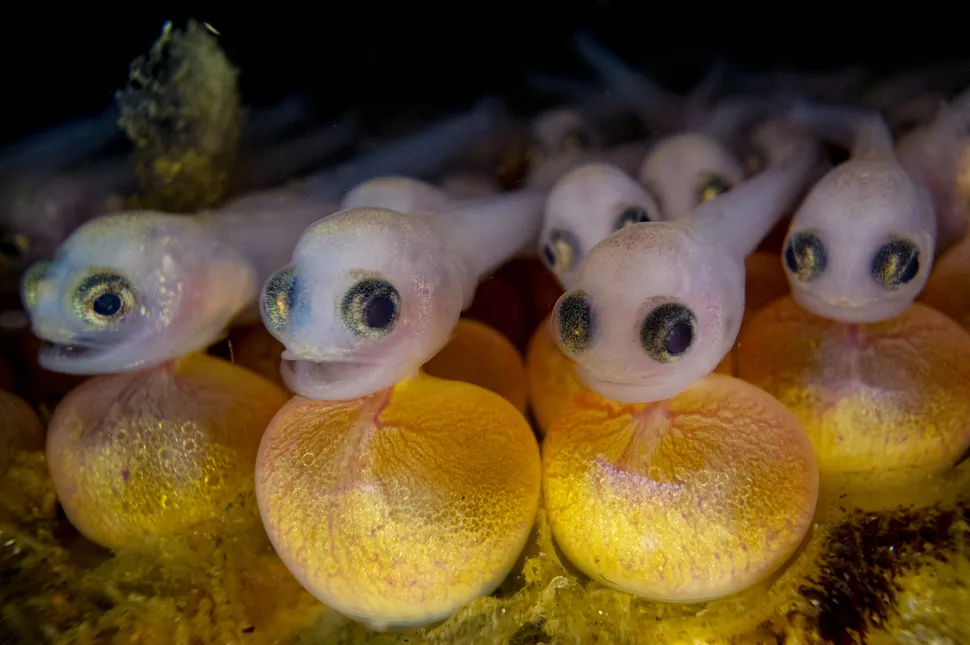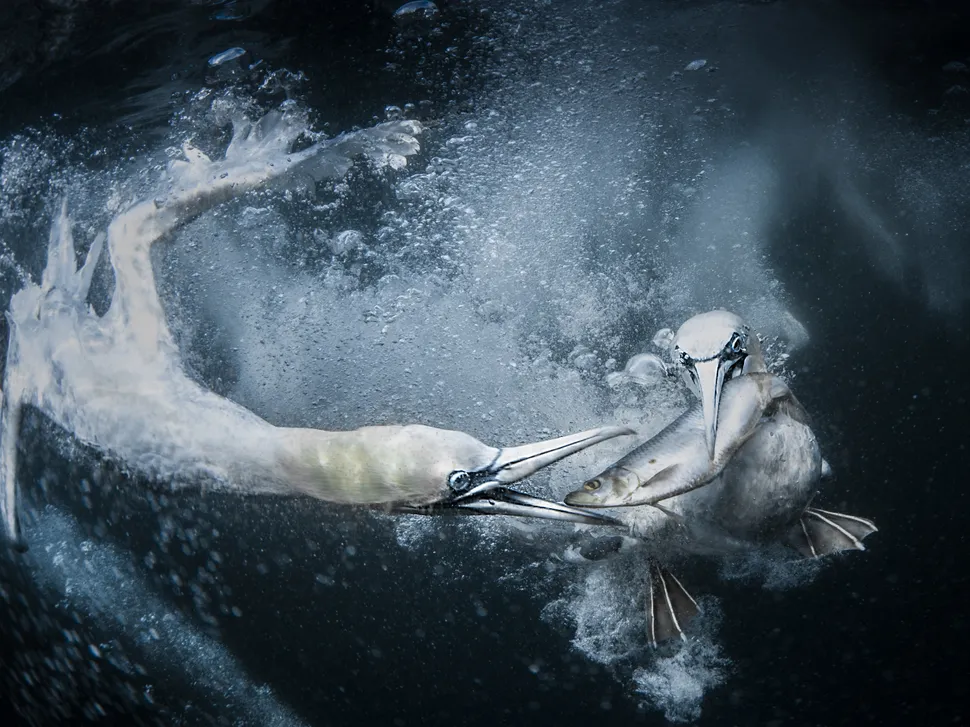Collected from some of the best-known photography competitions around the world, here are the most captivating nature photos of 2024.

Every autumn, millions of monarch butterflies (Danaus plexippus) migrate nearly 3,000 miles (4,800 kilometers) from North America to southwestern Mexico to hibernate over the winter, according to the National Museum of Scotland.
Photographer Jaime Rojo snapped this image of the butterflies clustered over fir trees in the El Rosario sanctuary, a UNESCO World Heritage site that’s home to many overwintering monarch butterflies. The photo was awarded the grand prize at the 11th annual Big Picture: Natural World Photography competition.

Photographer Shane Gross was awarded first place in the Ocean Portfolio category in the Ocean Photographer of the Year 2024 competition.
In this photo, a litter of wide-eyed baby plainfin midshipman fish (Porichthys notatus) rest above golden yolk sacs that are still attached to their bodies.

Photographer Kathleen Borshanian captured this image of an Arctic fox pup basking in the sun on the edge of a cliff on an island in the Bering Sea.
The Pribilof Islands Arctic fox (Vulpes lagopus pribilofensis) is endemic to the Pribilof Islands — four volcanic islands off the coast of Alaska. The fox in this image lurks near an entrance to one of many tunnels found all over the island. These tunnels form an underground maze and provide refuge for these pups, according to the image caption.
The photo was among the finalists in the Terrestrial Wildlife category in the 2024 Big Picture: Natural World Photography competition.

Below the towering trees of a pine plantation, photographer Toby Schrapel captured a photo of a biofluorescent southern brown tree frog (Litoria ewingii) perched atop a glowing bioluminescent ghost mushroom (Omphalotus nidiformis).
This photo was awarded first place in the People’s Choice category in the 2024 Beaker Street Science Photography Prize competition in Australia.

This photograph shows a forensic expert meticulously lifting the fingerprints from the tusk of an African elephant (Loxodonta) at Heathrow Airport in the U.K.
Photographer Britta Jaschinski sheds light on the illegal ivory trade that drives the poaching of elephants for their prized tusks. Fingerprints on ivory typically fade within a few hours, but forensic experts have pioneered a groundbreaking technique that enables investigators to lift fingerprints from tusks more than a month later.
This image was a finalist in the Human and Nature category in the 2024 Big Picture: Natural World Photography competition.
Whale graveyard

Beneath the coastal waters of East Greenland, a photographer captured the skeletal remains of minke whales resting in an underwater grave.
Photographer Alex Dawson took the image close to the Tasiilaq settlement, a small village that takes part in an annual hunt of the common minke whale (Balaenoptera acutorostrata). The whales are stripped of their meat and dragged back into the sea. Over time, their carcasses are picked clean by all kinds of marine animals.
The image, titled “Whale bones,” was awarded the overall prize in the Underwater Photographer of the Year 2024 competition.

Photographer Tracey Lund snapped this photo of a pair of swimming northern gannets while on vacation in Scotland’s Shetland islands.
With a wingspan of 5.9 feet (1.8 meters), northern Gannets (Morus bassanus) are the largest seabirds in the U.K. They dive from heights of 98 feet (30 m) into the ocean to hunt for fish.
“Thousands of gannets were in the sky above us and then started to dive into the sea after local fish,” Lund said in the photo caption. “An unbelievable spectacle to witness, let alone photograph.”
The image won the grand prize in the 2024 World Nature Photography Awards and also took the gold award in the Behavior category.

A mahi-mahi (Coryphaena hippurus) makes a successful catch during a feeding frenzy in this photo taken off the coast of Baja California.
“Watching them hunt was mesmerising — their speed and precision were unreal,” photographer Manuel Castellanos Raboso told Oceanographic magazine. “I wanted to capture the moment one broke through the ball with its catch. It took over 16 hours in the water, finding the right light and angle, but I finally got it.”
The image was awarded first place in the Wildlife Photographer of the Year category in the Ocean Photographer of the Year 2024 competition.

This image of a potbelly seahorse hidden behind a green coral in the murky waters off Sydney landed photographer Talia Greis first place in the Macro category in the Underwater Photographer of the Year 2024 competition.
The potbelly seahorse (Hippocampus bleekeri) is one of the largest seahorse species. They are found along the coasts of Australia and New Zealand. They can reach 11.8 inches (30 cm) in length, and as the name suggests, adult potbelly seahorses have very large bellies.

This colorful image shows an emperor shrimp (Periclimenes imperator) riding on the head of a nudibranch (Hypselodoris apolegma) that is sitting on its eggs.
Nudibranchs, also known as sea slugs, lay their eggs in the shape of a ribbon or tight spiral.
Photographer Enrico Somogyi snapped this image off the northeast coast of Bali and was awarded first place in the Compact category in the Underwater Photographer of the Year 2024 competition.
